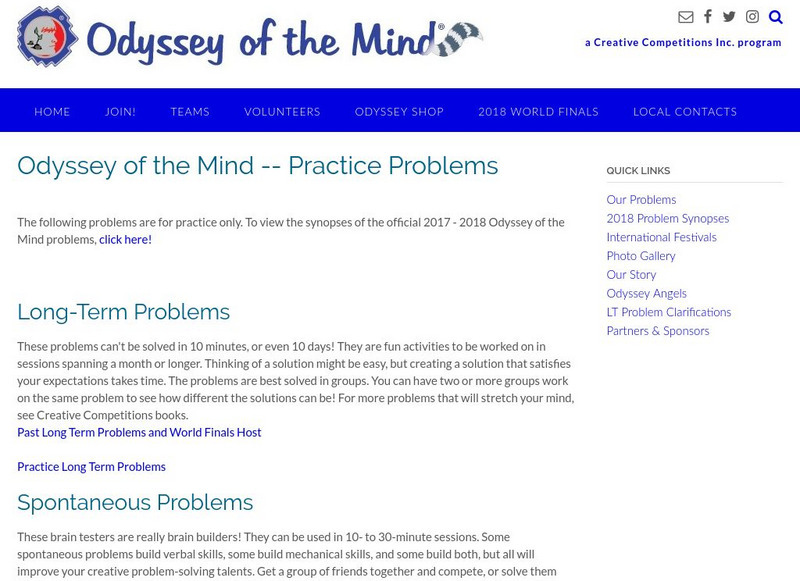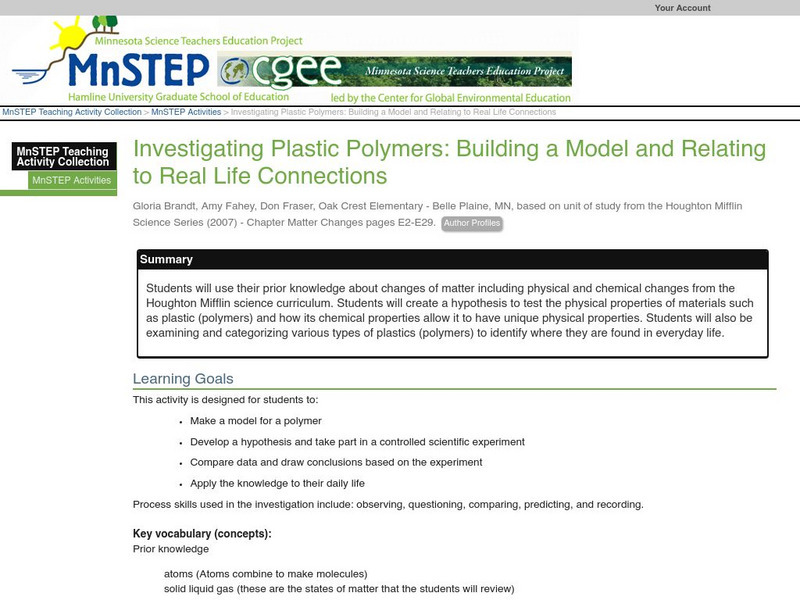Discovery Education
Discovery Education: Science of Everyday Life: Everyday Science of Sound [Pdf]
In this lesson plan students experience a series of demonstrations that show how sound is made and heard. Students will experiment with sound traveling through different mediums and sound that has different pitches.
Discovery Education
Discovery Education: Science of Everyday Life: Everyday Science of Eggs [Pdf]
A lab where students can investigate eggs and what happens to egg whites after they are beaten. Lesson plan includes teacher background, standards, and a procedure for students to develop their own experiment.
Discovery Education
Discovery Education: Science of Everyday Life: Interaction at a Distance [Pdf]
An experiment where students investigate the strength of magnets. This site includes a lesson plan with both teacher and student information for completing the experiment.
Discovery Education
Discovery Education: Science of Everyday Life: How Strong Is It? [Pdf]
In this lesson plan students will learn how strong a Post-it notes adhesion really is! Students will experiment pulling a Post-It note to collect quantitative data to explore the adhesive properties of the note.
Discovery Education
Discovery Education: Science of Everyday Life: Strong as Newspaper [Pdf]
In this lesson plan, learners use their engineering knowledge to construct a structure made of newspaper. Students test the strength of their structure with weights! Lesson plan includes teacher and student instructions.
Discovery Education
Discovery Education: Science of Everyday Life: Don't Slip! [Pdf]
In this lesson plan students experience friction by sliding a block of wood over sandpaper. Students will experiment with frictional forces by measuring with spring scales or rubberbands.
Discovery Education
Discovery Education: 3 M Science of Everyday Life: Dishwasher
A video detailing the history of the dishwashing machine. [3:13]
Science Struck
Science Struck: Examples of Pulleys in Daily Life
Learn how pulleys work and their many uses in everyday life, industry, recreation, and other activities. Includes many pictures of pulleys and pulley systems.
Science Struck
Science Struck: 10 Nasa Inventions You Might Be Using Every Day
Many things invented by NASA are used in everyday life. Some of the most widely used inventions are described here.
Science Struck
Science Struck: Chemical Reactions in Everyday Life
Provides some common examples of chemical reactions, e.g., in respiration, rusting, and photosynthesis.
Other
Freie Universitat Berlin: Everyday Objects [Pdf]
In our daily lives we are surrounded by objects which have specific roles and functions. Some are relatively simple, like a drinking cup. Others are much more complex, like a mobile phone. This wonderful 56-page handbook presents...
Other
Odyssey of the Mind: Second Time Around
What is the recycling process? Why is it important to recycle? Through the activities on this page, students explore the answers to these questions, encourage others to recycle, present skits on the effects of recycling, and more.
Other
Odyssey of the Mind: Clean Up Your Act
Students work in teams and give a presentation depicting the causes of pollution, the ways pollution affects the environment, suggestions for reducing pollution, and ideas for making things out of trash. Click on "Activity Summaries" and...
Science Education Resource Center at Carleton College
Serc: Investigating Plastic Polymers: Building a Model
Young scholars will use their prior knowledge about changes of matter including physical and chemical changes from the Houghton Mifflin science curriculum. Students will create a hypothesis to test the physical properties of materials...
Center for Innovation in Engineering and Science Education, Stevens Institute of Technology
Ciese Collaborative Projects: Down the Drain: How Much Water Do You Use?
How much water do you use everyday? Find out in this engaging investigation, where you compare your water usage with your classmates and other people around the world. An exploration filled with lots of math and science that students are...
![Discovery Education: Science of Everyday Life: Everyday Science of Sound [Pdf] Lesson Plan Discovery Education: Science of Everyday Life: Everyday Science of Sound [Pdf] Lesson Plan](https://d15y2dacu3jp90.cloudfront.net/images/attachment_defaults/resource/large/FPO-knovation.png)



